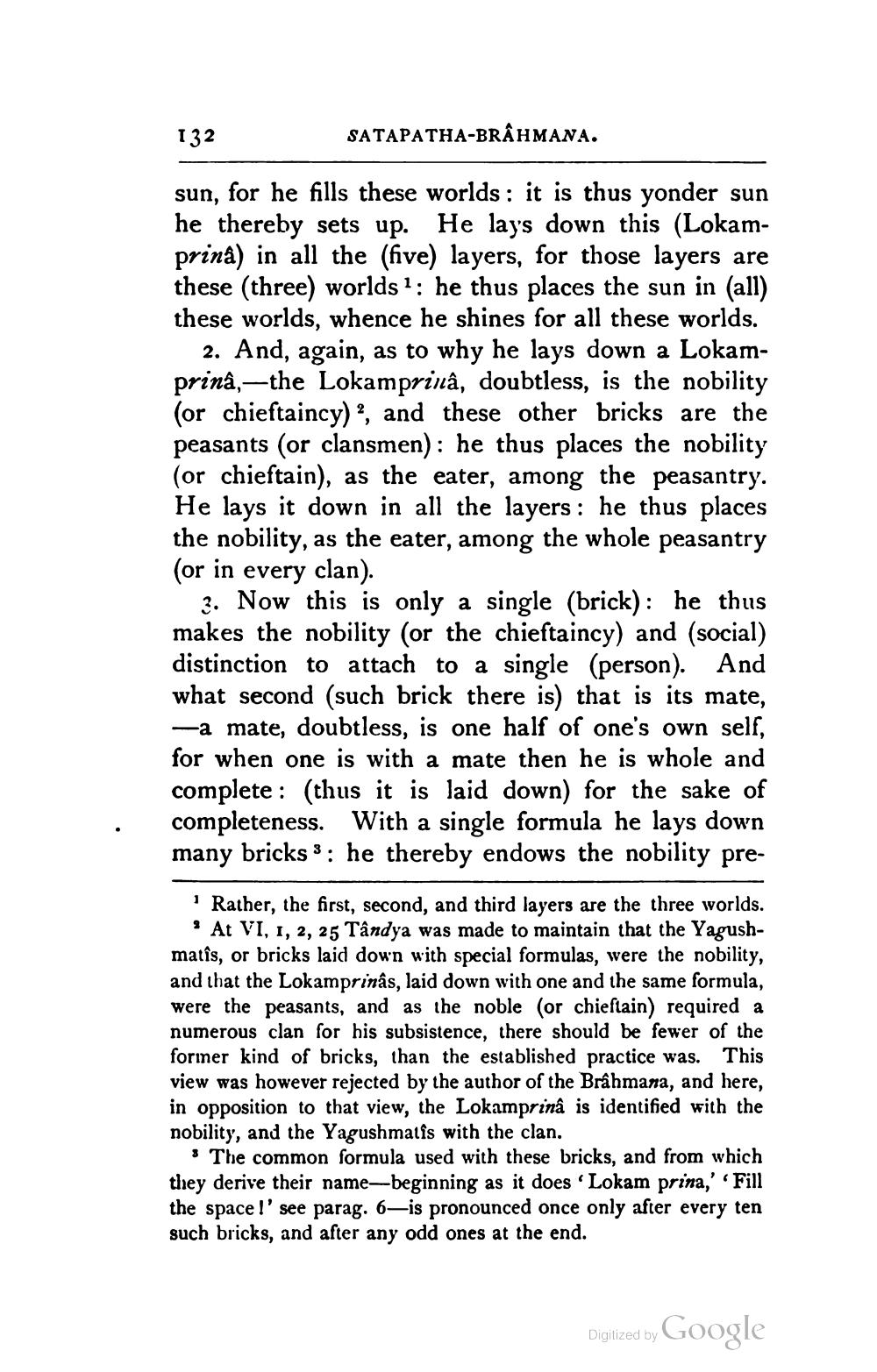________________
SATAPATHA-BRAHMANA.
sun,
for he fills these worlds: it is thus yonder sun he thereby sets up. He lays down this (Lokamprinâ) in all the (five) layers, for those layers are these (three) worlds1: he thus places the sun in (all) these worlds, whence he shines for all these worlds.
2. And, again, as to why he lays down a Lokamprinâ, the Lokamprinâ, doubtless, is the nobility (or chieftaincy), and these other bricks are the peasants (or clansmen): he thus places the nobility (or chieftain), as the eater, among the peasantry. He lays it down in all the layers: he thus places the nobility, as the eater, among the whole peasantry (or in every clan).
132
3. Now this is only a single (brick): he thus makes the nobility (or the chieftaincy) and (social) distinction to attach to a single (person). And what second (such brick there is) that is its mate, -a mate, doubtless, is one half of one's own self, for when one is with a mate then he is whole and complete (thus it is laid down) for the sake of completeness. With a single formula he lays down many bricks: he thereby endows the nobility pre
1 Rather, the first, second, and third layers are the three worlds.
At VI, 1, 2, 25 Tândya was made to maintain that the Yagushmatîs, or bricks laid down with special formulas, were the nobility, and that the Lokamprinâs, laid down with one and the same formula, were the peasants, and as the noble (or chieftain) required a numerous clan for his subsistence, there should be fewer of the former kind of bricks, than the established practice was. This view was however rejected by the author of the Brahmana, and here, in opposition to that view, the Lokamprinâ is identified with the nobility, and the Yagushmatis with the clan.
The common formula used with these bricks, and from which they derive their name-beginning as it does 'Lokam prina,' 'Fill the space !' see parag. 6-is pronounced once only after every ten such bricks, and after any odd ones at the end.
Digitized by
Google




